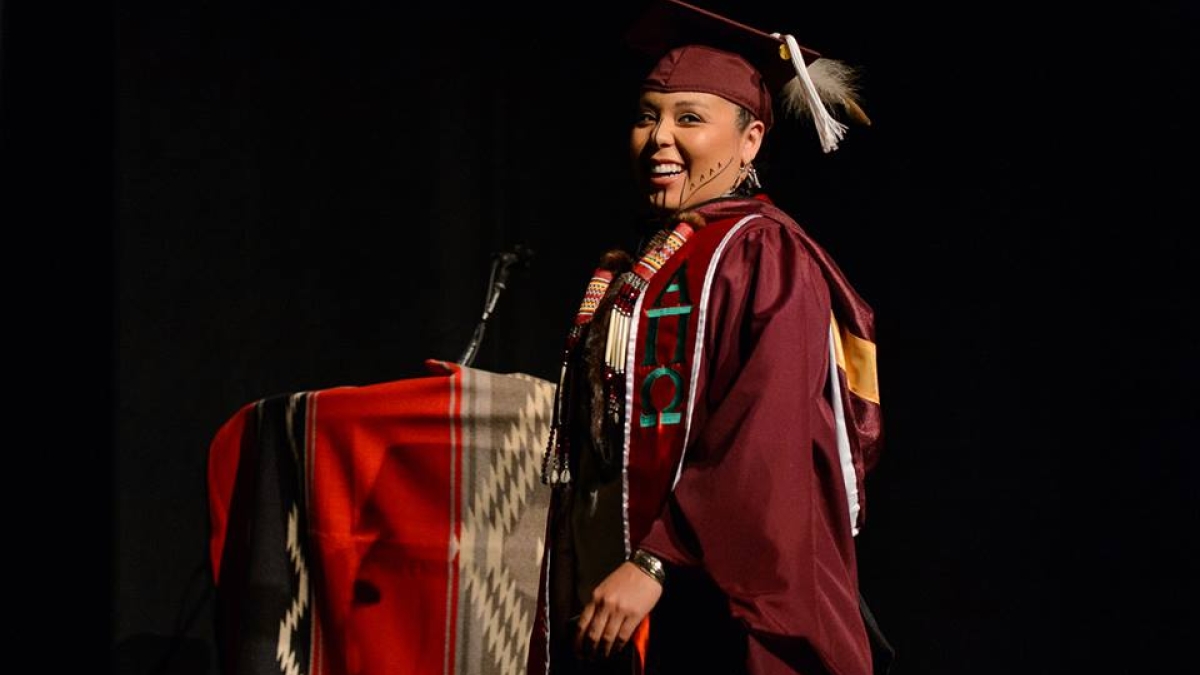New ASU course meshes academic experiences with American Indian views, values

A new course that will be offered this fall will mesh American Indian views and values with tools to succeed academically at Arizona State University.
Professor Donald Fixico will offer “AIS 191: Preparing for Academic Success” that teaches students how to navigate the university, form career goals and determine an academic plan to achieve those goals.
“Indian student retention nationwide is a problem,” said Fixico, ASU Distinguished Foundation Professor of History in the School of Historical, Philosophical & Religious Studies, in the College of Liberal Arts and Sciences.
The scope of the higher education problem is illustrated by ASU School of Social Transformation professor Bryan Brayboy, an author of the book, “Postsecondary Education for American Indian and Alaska Natives: Higher Education for Nation Building and Self-Determination.”
“If 100 American Indian students start ninth grade, about 58 will graduate from high school (this is about the national average). Of those 58, 20 will attend some form of post-secondary education. Of those 20, two will graduate with a four-year degree within 6 years of starting,” according to the book by Brayboy, Amy Fann, Angelina Castagno and Jessica Solyom.
Emphasis in AIS 191 is placed on the American Indian way of doing things, including personal and tribal values that should be respected in correlation to mainstream methods and values, said Fixico, who is also the author of the book, “The American Indian Mind in a Linear World.”
“I don’t think we’ve looked at how Native people do things. Their system of knowledge and logic is unique according to their world view,” he added. “Because each tribe’s culture is different, I would contend that they think in different ways.”
American Indian Studies Director and Foundation Professor John Tippeconnic researched the retention issue through a report he co-authored, “The Dropout/Graduation Crisis among American Indian and Alaska Native Students: Failure to Respond Places the Future of Native Peoples at Risk.”
“We are pleased to house ‘AIS 191: Preparing for Academic Success’ in American Indian Studies and feel the course will help ground students in the experiences of Indian nations, peoples and communities from American Indian perspectives. Student retention rates are not what we want them to be and are the result of a complex set of circumstances,” Tippeconnic said. “It is our hope that the course focus on recognizing the strength of Indigenous peoples and what students bring to the higher education experience – their languages, cultures and knowledge systems - will help them successfully graduate from ASU.”
Case studies of three American Indian individuals who were successful in their academic careers and used their education to better their communities will be addressed in the course. Former Navajo Nation President and former ASU Advisor to the President on American Indian Affairs, Peterson Zah’s story of success will be examined through his book, “We Will Secure Our Future: Empower the Navajo Nation,” as will Dakota physician Charles Eastman’s “From the Deep Woods to Civilization” and Navajo surgeon Lori Arviso Alvord’s “The Scalpel and the Silver Bear.”
“When you read their biographies, it is one of struggle and success,” Fixico said.
Today’s students encounter their own struggles, from being hesitant to seek help from student support services to a lack of understanding from family members who may not relate to their children’s experiences at the university if they are the first member of their family to go to college.
“There are cultural and psychological barriers that need to be met and understood,” Fixico said. “American Indian students have never really had higher education as a part of their culture, but it has been developing sporadically for the past few generations. The thinking is now really changing for many Indian students to get a doctoral degree, to become a medical doctor or to get an advanced degree. It needs to be in their realm of possibilities.”
Students will keep a journal as part of the class to document progress in their academic journeys as well as look back at where they’ve been and how far they’ve come. Specific topics to be taught in the course include: Higher Education as a Part of Native Cultures & Preparation for the Future; Learning Styles: Academic Culture and Native Cultures; and Support Systems at ASU and at Home. Diane Humetewa, ASU special advisor to the president for American Indian affairs, worked with Freeport MacMoran Copper and Gold to secure funding for student’s reading materials for the course.
After the seven and a half week course is wrapped up, Fixico will meet with the students as a group on a monthly basis to touch base and encourage them in their studies.
Although the course teaches from a primarily American Indian point of view, any ASU student may take the class.
“I would welcome non-native students. They’re all coming from different cultural backgrounds, yet they’re in the same academic experience,” Fixico said.